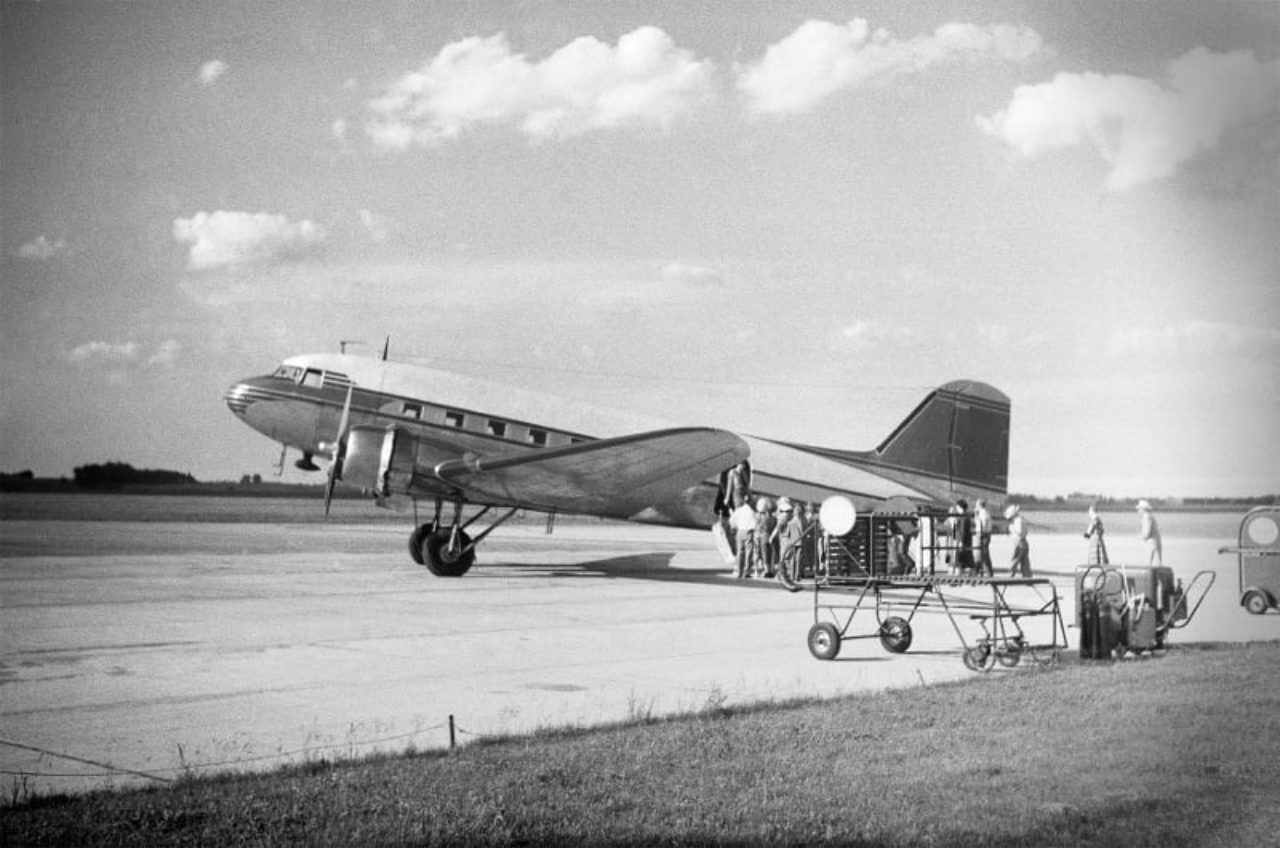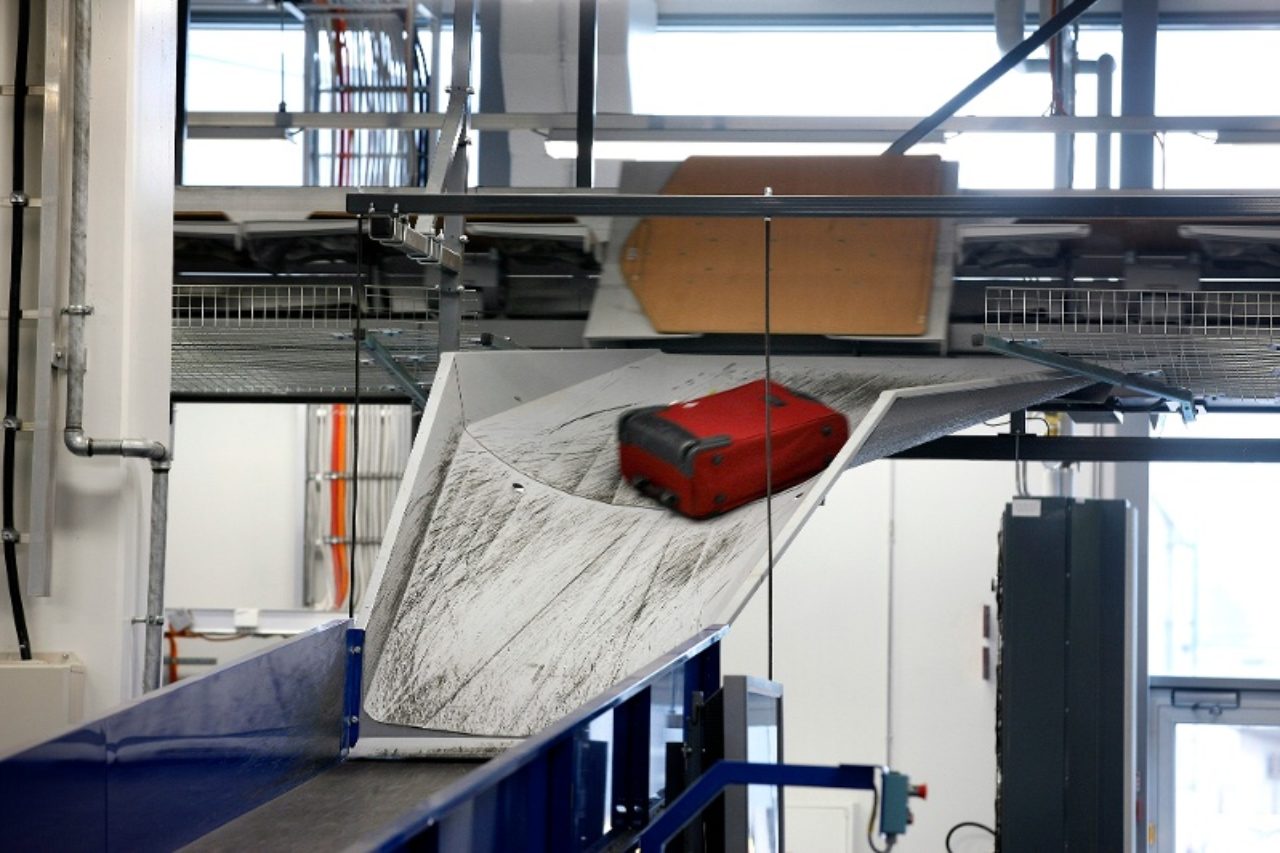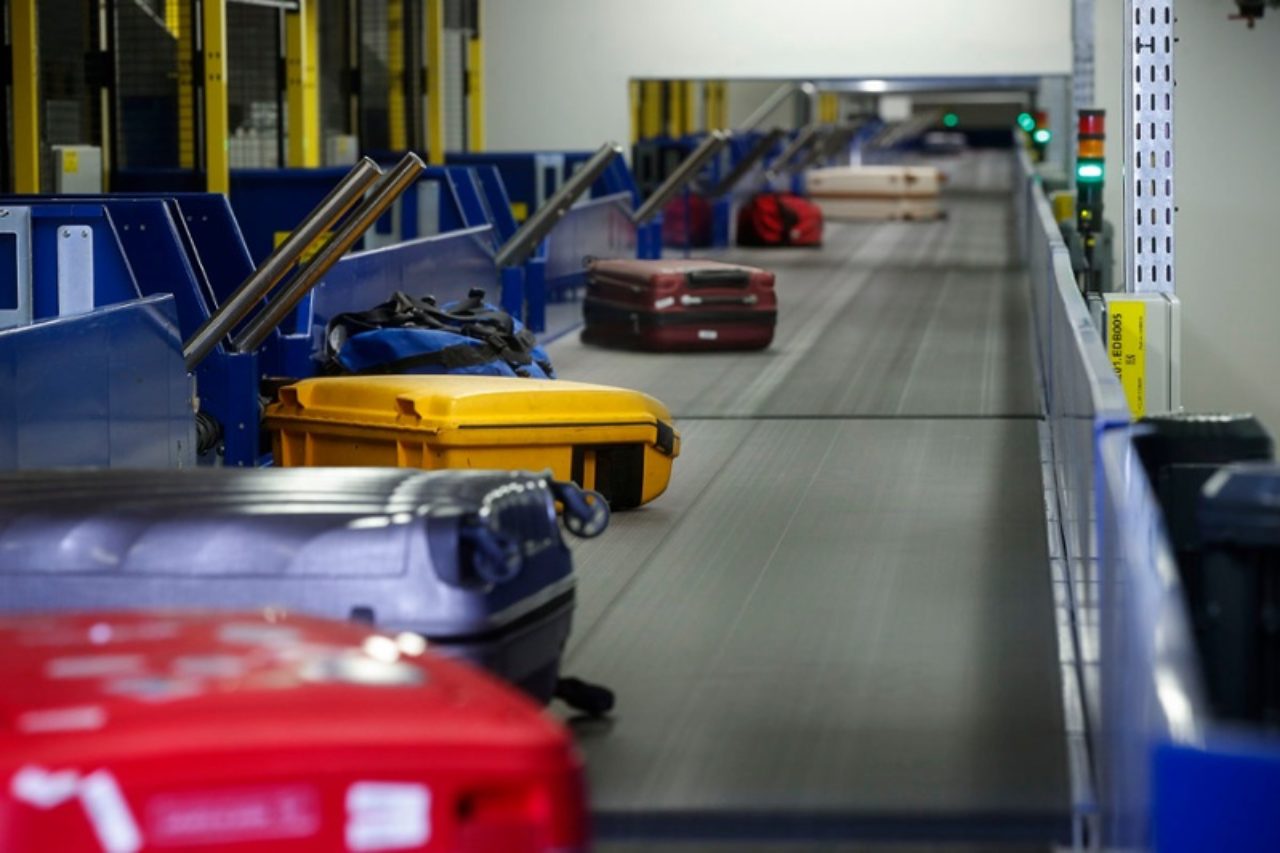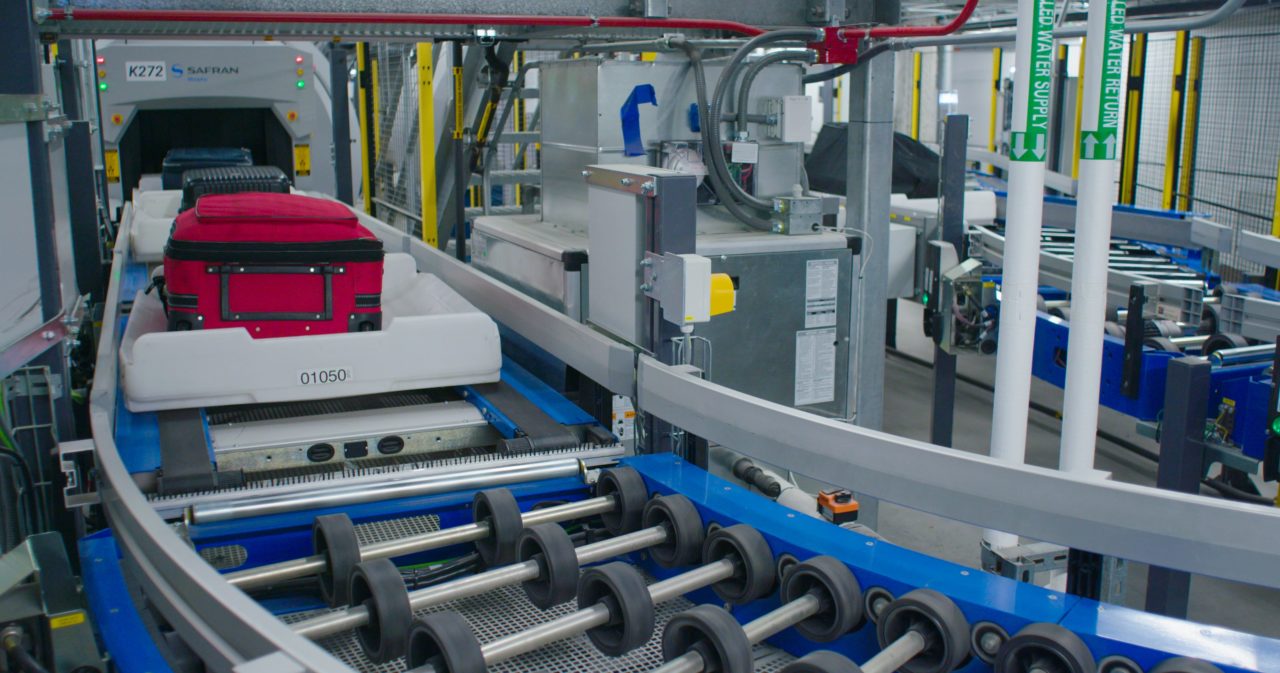With the rise of aviation and more and more people starting to use aircraft as a means of transportation, however, aircraft became larger and airports more complex.
The old system of baggage drop off and collection could no longer be allowed and a new baggage handling system had to be invented.
how baggage handling system works
And so an operating principle developed that still defines how baggage handling systems works today.
Passengers would hand over their luggage at a check-in counter, a conveyor belt would then transport the luggage to a location where airport personnel specialising in fast loading and unloading would load it onto wagons, also known as baggage dollies.
Upon the aircraft’s arrival, the luggage would be unloaded from the aircraft and transported to wagons. These would be driven to a collection point often next to the terminal building. The luggage would be placed on a conveyor belt – or directly on a carousel belt –and transported to inside the building. There, the luggage would be delivered to a carousel belt, where it could be received by passengers.
Early technology used in a baggage handling system
Historical baggage handling systems used the technology adopted in open mining systems and consisted of simple, straight conveyor belts.
Over time, however, facilities became more complex and new facilities – such as round conveyor belts, sorting lanes, sorting facilities and parking facilities (later known as baggage storages) – were introduced to cope with the ever-increasing volume of luggage.
The automisation of the baggage handling system
In 1971 the first automated baggage handling system was invented by BNP Associates and it’s this technology that is in use in every major airport around the world today.
By automating the system, a central control system utilising specially developed baggage handling software operates the entire baggage handling system. Today, this includes mobile baggage handling software which allows managers of the system to check and correct problems from their mobile phones.









